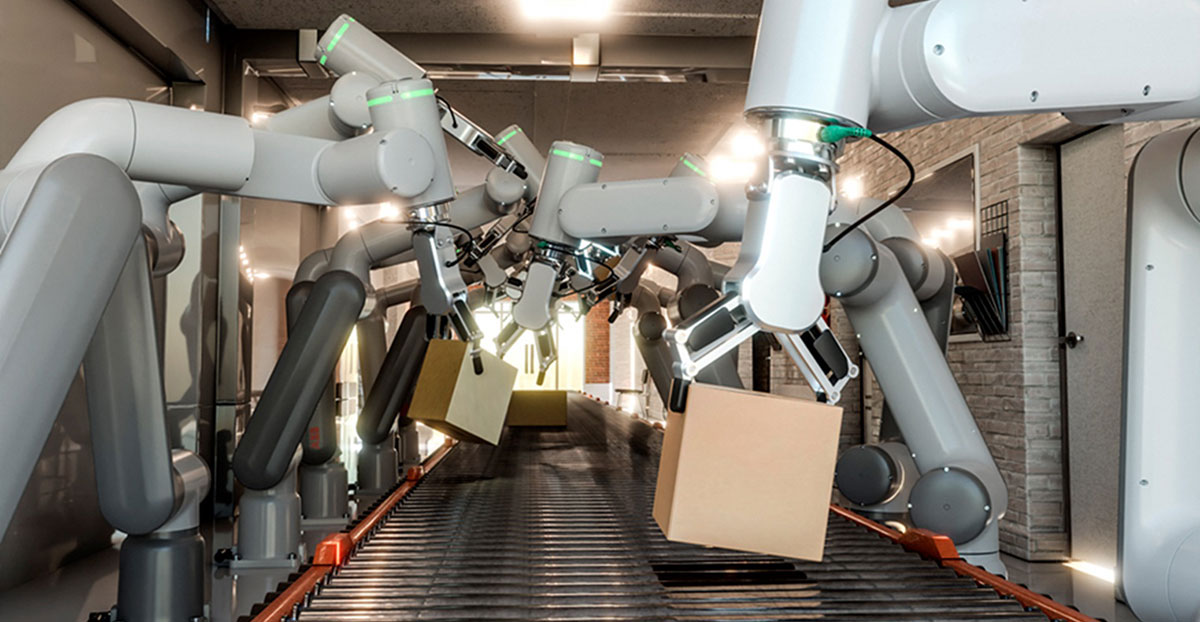Manufacturing in 2024: What to Expect

Throughout 2023, the U.S. economy has remained largely resilient despite rapid monetary policy tightening. Buoyed by stable consumer demand and a strong labor market, the manufacturing sector performed reasonably. The manufacturing sector outlook for 2024 remains cautious amidst several challenges. Fiscal tightening, inflation, and geopolitical instability could undermine growth in 2024, and if favorable economic trends start to unwind, the risk of a downturn looms large.
Here are five 2024 predictions for manufacturers:
- Rebalancing business will continue to be a challenge – Manufacturing executives have spent the past four years essentially firefighting the pandemic and its aftermath. Unsurprisingly, executives are hoping for some semblance of normalcy as they endeavor to rebalance their business.
Most leading indicators of supply chain performance, labor markets, and productivity are gradually aligning with their pre-pandemic trajectories. However, inflation, fiscal spending cuts, and geopolitical instabilities continue to loom over 2024. Investment in software and other digital technologies will help hedge against this VUCA (volatility uncertainty, complexity, and ambiguity) in 2024.
Manufacturers will accelerate investments to protect long-term profitability by broadening their smart manufacturing capabilities. The two dominant themes will be continuing to implement smart factory initiatives to achieve targeted business goals, and utilizing digital technology to increase supply chain visibility, productivity, and connectivity with suppliers, partners, and consumers.
- AI will be key to optimizing supply chains and inventory – Global supply chain management approaches can broadly be divided into two types based on a company’s inventory management philosophies – just-in-time or just-in-case. Companies usually bounce between these approaches based on market conditions and operational realities. In idyllic conditions, such as the ones experienced during the previous two decades, companies gravitated towards optimizing inventory costs and, hence, just-in-time found favor. But in response to pandemic-led shortages, companies have recently sought the protection of just-in-case inventory management and increased inventories to manage contingencies.
This approach, however, has resulted in storage space shortages and a meteoric rise of warehouse rents. As manufacturers realize the long-term nature of this VUCA environment, more and more will pivot towards a data-driven and agile approach that dynamically adjusts to real-time conditions.
Spending on AI-enhanced supply chain management solutions will increase next year as manufacturers look to balance the cost and risks of inventories. Supply chain management solutions that predict demand and risks and consider supplier reliability and agility and transcontinental transportation risks will be a key factor in creating the market leaders and winners.
- Automation will debottleneck warehouses – The manufacturing sector went into a just-in-case overdrive in the past few years. The peak of the deliveries started arriving all at the same time, clogging up ports and warehouses, and soon after that, the Ukraine war began. The industry has been cautiously dealing with the bullwhip effect of the supply chain. The dominant theme for 2023 has been to find a balance between bringing inventories and derisking disruptions. The factors most impacted by this bullwhip effect were warehouse utilization and rents. Although warehouse vacancy rates have cooled recently, rents are still at historical highs.
2024 will see rationalization of warehouse capacity, in light of increased real estate prices and higher interest rates. The focus will be on optimizing capacity through automation. Warehouse management systems (WMS) are likely to play a critical role because they can optimize the velocity of goods, reduce errors, improve labor productivity, and optimize warehouse storage. Integrating WMS with other supply chain solutions will see an acceleration in 2024, as customers look to achieve agility, transparency, and increased productivity in their supply chains.
- AI will engulf Industry 4.0 – AI is now already at the heart of any Industry 4.0 transformation. It is widely acknowledged as the most important tool redefining the boundaries of manufacturing. However, 2023 was the year of Generative AI. The speed of maturity of Generative AI has taken the industry by surprise. 2024 will be the year of maturity for Gen-AI-related use cases and how Gen-AI will collaborate with traditional predictive AI to unleash more areas of productivity.
Four use cases are likely to mature the most and find wider adoption:
- Predictive maintenance. The utilization of AI-driven predictive maintenance has evolved from preventing costly breakdowns to orchestrating maintenance schedules to optimize production. The vendor landscape will likely mature the most, and more solutions will be available to meet customer complexities and needs. As industrial equipment companies switch to the servitization model, it will act as an additional driver.
- Dynamic supply chain management. After making its impact felt in inventory management and demand forecasting, AI will revolutionize supply chain management, from demand management to last-mile delivery.
- Product quality via cognitive analytics. The adoption of AI-powered cognitive analytics to enhance quality control is likely to grow and mature with incorporation of Gen-AI.
- Innovative design with Gen-AI-driven creativity. Product design will witness a Gen-AI-driven makeover, with algorithms generating innovative concepts based on consumer preferences and market trends. This will expedite design cycles and enhance product relevance in dynamic market conditions.
- Ecosystems will take center stage – Ecosystem-centric thinking has gained solid traction in the past few years, and it will accelerate in 2024. There are various types of digital ecosystems. Some are defined by the number of partners involved, and others by what they offer. All ecosystems share these four characteristics: symbiotic, customer-centric, scalable, and most importantly, focused.
- Technology partner ecosystem. No man is an island. This is particularly true for digital transformation projects, which typically rely upon several specialists. Relying on a single turnkey partner will increasingly give way to a partner ecosystem approach, which will handle the size and complexity of projects.
- Platform ecosystem. Leading manufacturers are pivoting from product-centered thinking to modern platform-oriented digital thinking. In this new era, composition platforms provide the plumbing and glue for agility and digital transformation. Manufacturers will rely increasingly on the flexibility of platforms over monolithic products.
In conclusion, the manufacturing landscape will continue to evolve, battling the VUCA environment, relying on Industry 4.0 and AI synthesis in 2024. This evolution isn’t just about boosting productivity; it’s about fostering innovation, sustainability, and creating a future that combines human ingenuity with technological prowess. Embracing these advancements ensures the manufacturing sector withstands the near-term challenges and emerges even stronger in the coming decades.




